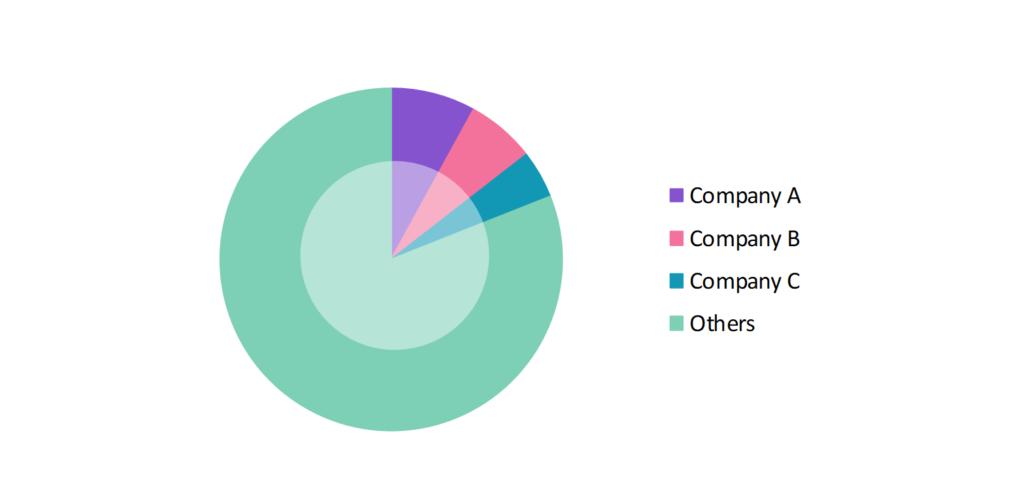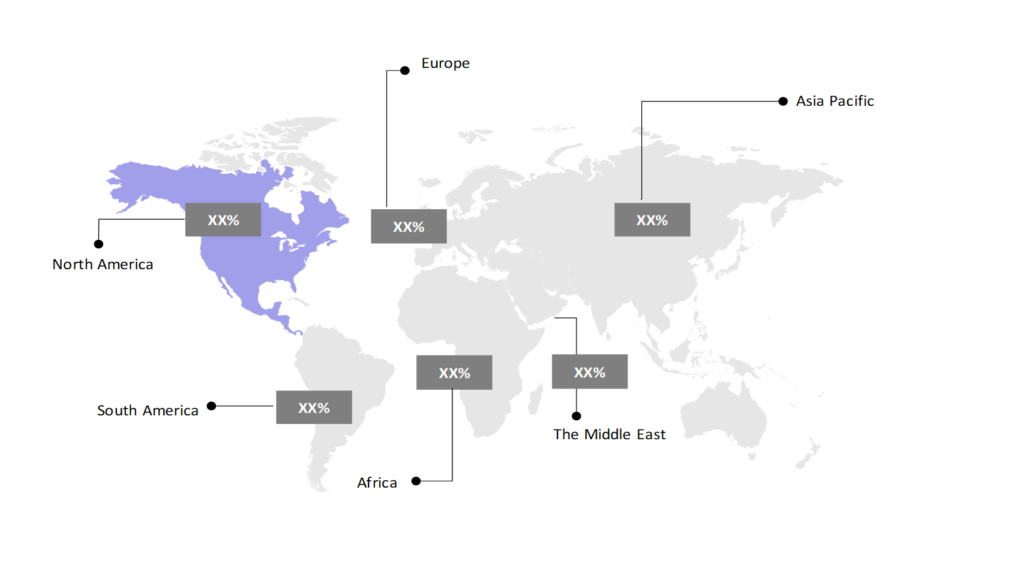Zero Emission Vehicle (ZEV) Market Outlook: Size, Share, Trends & Growth Analysis (2024-2029)
The market report provided a comprehensive analysis segmented by Vehicle Type (Battery Electric Vehicle (BEV), Fuel Cell Electric Vehicle (FCEV)); by Application (Commercial Vehicles, Passenger Vehicles, Two Wheelers); by Geography (North America, South America, Asia Pacific, Europe, The Middle East, Africa).
Outlook

- The zero emission vehicle (ZEV) market is estimated to be at USD 450.64 Bn in 2024 and is anticipated to reach USD 968.85 Bn in 2029.
- The zero emission vehicle (ZEV) market is registering a CAGR of 16.54% during the forecast period 2024-2029.
- The global zero emission vehicle (ZEV) is driven by the increasing government regulations on emissions, combined with advancements in electric vehicle (EV) technology. Advances in battery technology and fuel cell efficiency are critical factors propelling ZEV development.
Request a free sample.
Ecosystem

- The participants in the global zero emission vehicle (ZEV) industry are heavily investing in ZEV technology, with a strong focus on electric and hydrogen-powered vehicles.
- These companies primarily focus on technological innovation, along with expansion of production capabilities and collaborations between automakers and tech companies to meet the growing ZEV demand.
- Several important entities in the zero emission vehicle (ZEV) market include Rivian Automotive, LLC; Tesla, Inc.; Hero Electric Vehicles Pvt. Ltd.; Karma Automotive Inc.; Tata Passenger Electric Mobility Ltd.; and others.
Ask for customization.
Findings
| Attributes | Values |
|---|---|
| Historical Period | 2018-2022 |
| Base Year | 2023 |
| Forecast Period | 2024-2029 |
| Market Size (2024) | USD 450.64 Bn |
| Market Size (2029) | USD 968.85 Bn |
| Growth Rate | 16.54% CAGR from 2024 to 2029 |
| Key Segments | Vehicle Type (Battery Electric Vehicle (BEV), Fuel Cell Electric Vehicle (FCEV)); Application (Commercial Vehicles, Passenger Vehicles, Two Wheelers); Geography (North America, South America, Asia Pacific, Europe, The Middle East, Africa) |
| Key Vendors | Rivian Automotive, LLC; Tesla, Inc.; Hero Electric Vehicles Pvt. Ltd.; Karma Automotive Inc.; Tata Passenger Electric Mobility Ltd. |
| Key Countries | The US; Canada; Mexico; Brazil; Argentina; Colombia; China; India; Japan; South Korea; The UK; Germany; Italy; Turkey; UAE; Saudi Arabia; Egypt; South Africa |
| Largest Market | North America |
Get a free quote.
Trends
- Battery Recycling Initiatives: As electric vehicles become more prevalent, battery recycling is gaining importance since battery manufacturing has a series of environmental impacts. In 2023, Volkswagen expanded its battery recycling plant in Germany to handle the growing demand for sustainable disposal and reuse of lithium-ion batteries, underscoring the environmental focus of the industry.
- Vehicle-to-grid (V2G) Integration: Vehicle-to-grid (V2G) technology allows ZEVs to send energy back to the grid when demand is high. In 2023, Nissan partnered with E.ON to pilot V2G systems in Europe, demonstrating how ZEVs can play a role in stabilizing the grid during peak times.
- Smart Charging Infrastructure: Smart charging solutions are becoming more widespread, offering ZEV owners better energy management. In 2023, ChargePoint developed an AI-powered charging network that allows vehicles to charge during off-peak hours, optimizing energy use and reducing pressure on the grid.
Speak to analyst.
Catalysts
- Stringent Emission Regulations: Emission standards are becoming increasingly stringent across global jurisdictions. These regulations aim to reduce pollution levels and promote cleaner industrial practices worldwide. In 2023, the California Air Resources Board introduced a mandate requiring all new vehicles sold in the state to be zero-emissions by 2035, pushing automakers to accelerate ZEV production.
- Increased Investment in Electric Vehicle Production: Automakers are directing substantial resources towards electric vehicle production. This shift in focus reflects the automotive industry’s adaptation to changing market demands and regulatory landscapes. In 2023, Ford committed USD 11 billion to expand its electric vehicle lineup, signaling the automotive industry’s dedication to transitioning from fossil fuel-powered vehicles to zero-emission models.
- Government Subsidies and Incentives: Governments are offering financial incentives to automobile buyers to encourage them to ZEV adoption. In 2023, the US federal government extended tax credits of up to 7,500 USD for consumers purchasing electric vehicles, providing a significant financial incentive for ZEV adoption.
Inquire before buying.
Restraints
- Battery Disposal Concerns: The lifecycle of ZEV batteries is emerging as an environmental concern. Lithium-ion battery production and disposal are presenting new challenges in the quest for sustainable transportation. In 2023, Tesla faced backlash over concerns regarding the sustainability of its battery disposal practices, highlighting the need for improved recycling technologies.
- Longer Recharging Times: ZEV charging durations remain a point of comparison with conventional vehicles. This time differential presents a practical consideration for consumers weighing the switch to zero-emission transportation. In 2024, Chevrolet faced criticism after its Bolt EV, which has a battery of 60 kWh, was one of the slowest-charging EVs on the market, highlighting the need for further advancements in the charging technology.
- Battery Degradation Over Time: One of the major concerns with ZEVs is the gradual degradation of battery capacity due to the extended use of the battery over a period of time. In 2023, Nissan faced complaints from owners of older Leaf models regarding reduced range after several years of usage, highlighting the long-term sustainability challenge of current battery technology.
Personalize this research.
Hotspot

Explore purchase options.
Table of Contents
| 1. Introduction 1.1. Research Methodology 1.2. Scope of the Study 2. Market Overview / Executive Summary 2.1. Global Zero Emission Vehicle (ZEV) Market (2018 – 2022) 2.2. Global Zero Emission Vehicle (ZEV) Market (2023 – 2029) 3. Market Segmentation 3.1. Global Zero Emission Vehicle (ZEV) Market by Vehicle Type 3.1.1. Battery Electric Vehicle (BEV) 3.1.2. Fuel Cell Electric Vehicle (FCEV) 3.2. Global Zero Emission Vehicle (ZEV) Market by Application 3.2.1. Commercial Vehicles 3.2.2. Passenger Vehicles 3.2.3. Two Wheelers 4. Regional Segmentation 4.1. North America 4.1.1. The US 4.1.2. Canada 4.1.3. Mexico 4.2. South America 4.2.1. Brazil 4.2.2. Argentina 4.2.3. Colombia 4.2.4. Rest of South America 4.3. Asia Pacific 4.3.1. China 4.3.2. India 4.3.3. Japan 4.3.4. South Korea 4.3.5. Rest of Asia Pacific 4.4. Europe 4.4.1. The UK 4.4.2. Germany 4.4.3. Italy 4.4.4. Rest of Europe 4.5. The Middle East 4.5.1. Turkey 4.5.2. UAE 4.5.3. Saudi Arabia 4.5.4. Rest of the Middle East 4.6. Africa 4.6.1. Egypt 4.6.2. South Africa 4.6.3. Rest of Africa 5. Value Chain Analysis of the Global Zero Emission Vehicle (ZEV) Market 6. Porter Five Forces Analysis 6.1. Threats of New Entrants 6.2. Threats of Substitutes 6.3. Bargaining Power of Buyers 6.4. Bargaining Power of Suppliers 6.5. Competition in the Industry 7. Trends, Drivers and Challenges Analysis 7.1. Market Trends 7.1.1. Market Trend 1 7.1.2. Market Trend 2 7.1.3. Market Trend 3 7.2. Market Drivers 7.2.1. Market Driver 1 7.2.2. Market Driver 2 7.2.3. Market Driver 3 7.3. Market Challenges 7.3.1. Market Challenge 1 7.3.2. Market Challenge 2 7.3.3. Market Challenge 3 8. Opportunities Analysis 8.1. Market Opportunity 1 8.2. Market Opportunity 2 8.3. Market Opportunity 3 9. Competitive Landscape 9.1. Rivian Automotive, LLC 9.2. Tesla, Inc. 9.3. Hero Electric Vehicles Pvt. Ltd. 9.4. Karma Automotive Inc. 9.5. Tata Passenger Electric Mobility Ltd. 9.6. Company 6 9.7. Company 7 9.8. Company 8 9.9. Company 9 9.10. Company 10 |
Know the research methodology.
Zero Emission Vehicle (ZEV) Market – FAQs
1. What is the current size of the zero emission vehicle (ZEV) market?
Ans. In 2024, the zero emission vehicle (ZEV) market size is USD 450.64 Bn.
2. Who are the major vendors in the zero emission vehicle (ZEV) market?
Ans. The major vendors in the zero emission vehicle (ZEV) market are Rivian Automotive, LLC; Tesla, Inc.; Hero Electric Vehicles Pvt. Ltd.; Karma Automotive Inc.; Tata Passenger Electric Mobility Ltd.
3. Which segments are covered under the zero emission vehicle (ZEV) market segments analysis?
Ans. The zero emission vehicle (ZEV) market report offers in-depth insights into Vehicle Type, Application, and Geography.
